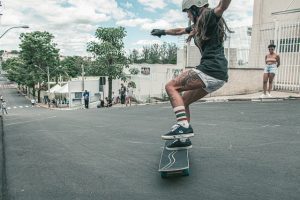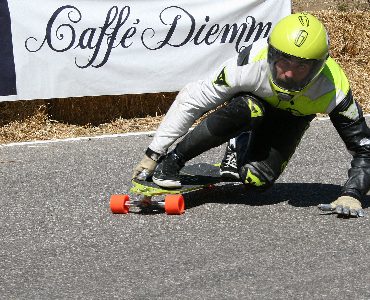Safe falling while riding a longboard is an essential skill set crucial for every longboarding enthusiast. Our goal is to empower you to chase your passion with confidence and safety. Join us as we explore the new risks associated with this sport. Delve into the psychological aspects, and share key techniques for safe jumping. Every day brings fresh opportunities to learn and improve your skills. Stay updated with the latest news and tips by visiting your favorite gear and safety equipment shop designed to enhance your longboarding experience.

We’ll also explore advanced tactics for experienced riders, emphasizing the importance of physical fitness and mental preparation in preventing severe injuries. We also emphasize here the importance of knowing the safety features of your board, so you can fall safely. It’s wonderful to understand that if you ever fall off a skateboard, being in good physical shape and having the right mental readiness can significantly reduce the risk and severity of injuries.
Safe Skate Falling
- Skateboarding is an art but often entails hard falling so you need to learn skateboard safety.
- We’ll explore the best art of dropping safely in skateboarding and understanding the skate risks. To do this, we’ll learn the basic to advanced skate techniques for safe falls and take wisdom from the skateboard experts.
- Skateboard safety is a primary concern when skating. Skateboarders must wear the proper skateboard safety gear such as helmets, skateboard wrist guards, skateboard knee pads, and skateboard elbow pads, understand the importance of skateboard terrain, be mindful of their surroundings, and have a good sense of skateboard balance. These are all essential elements of any skateboard experience. Be safe and prevent skate injury especially when you fall.
- Remember, riding skateboards is not about avoiding falls—it’s about mastering them. So let’s embrace our missteps with grace, keep practicing, and soon we’ll be skating like pros!
Practice Skateboard Safe Falling
Falling Safely When Skating
- We understand the importance of practicing how to fall when skateboarding. While skateboards can be a great source of fun, skating safety is also important. If you want to learn how to fall safely, then you should also know the new features of your board.
- That’s why we want to emphasize the importance of fetal position and mitigate injury. Learning to fall safely from a skateboard is key to reducing the risk of serious injury, so understanding skateboard safety is vital.
- In addition, it’s important to have the right mindset when faced with falls. This means wearing a skateboard helmet and taking the time to understand the different skateboard styles, as well as the various skateboard manufacturers and safety gear. It also means understanding the basics of skateboarding, as an integral part of skateboarding. When you fall off a skateboard, having the right mindset helps you get back up and try again.
- Learning how to fall safely is important in skating, you can significantly reduce your risk of injuries, such as head injuries, even when you’re at the skate park or hit the concrete.

Remember, skateboarding injuries happen, but being prepared can help you minimize the chances of breaking your wrists or suffering severe injuries.
Fear Management And Mental Readiness
At FamilyHype, we understand the need to conquer fear when it comes to skateboard falls. We prioritize Fear Management, to promote skateboard safety in skating. Let’s explore how to better equip ourselves for safe tumbles, whether it’s falling forward or dropping backward. Skating is an extreme sport, but it’s also a mental game. It takes courage to face skating fear and hesitation head-on. We can use Fear Management techniques, such as deep breathing, self-talk, and visualization, to help manage our fear and stay focused.
We can also use Mental Readiness techniques to be safe when skating. By integrating these techniques into our skateboard practice, including learning how to fall securely and additional falling techniques, we can prepare for skateboard maneuvers. We can also use skateboard safety gear and skate elbow and knee pads. We believe in empowering our skateboard community to improve safety and confidence while skating. We strive to help our readers master the aspects of skateboard falls and other extreme skateboard maneuvers, fall off a skateboard, and skateboarding safety.
Basic Techniques For Safe Fall Forward
Navigating the pavement on a skateboard can be tricky, but understanding how to control your body during a fall can drastically minimize skateboarding injuries.
- Landing skate safety gears play a crucial role in this.
- Wear protective skateboard gear such as skateboard helmets and skateboard pads to shield vital parts.
- Practice fall simulation to help develop muscle memory for safe landing.
We know that skating is an activity that requires an extra level of caution, and that’s why we believe it’s essential to delve deeper into more sophisticated techniques for falling securely, especially when skating stairs or dropping fast. By incorporating a few tips like the butt slide, skateboarders can gain valuable insight into enhancing their safety measures.
By keeping these three basic principles in mind, skateboarders can better protect themselves and their families when skateboarding. Pun intended—safety should always come first.
How To Advanced Skateboard Falling Forward Techniques
Understanding advanced techniques for taking a fall can significantly improve your ability to avoid serious injury while enjoying the thrill of a skateboard ride.

As this article focuses on skating and proper falling techniques, it’s important to note the primary concern – the skateboard – and its related features, such as speed, maneuverability, and agility.
It’s also important to consider the other entities within the skating class, like safety equipment, skateboard safety gear, and skateboard parks. Fear management and injury prevention are key to maintaining safety, and ensuring we serve our bodies well. By learning how to fall correctly, we minimize damage and maximize fun.
Now that we’ve covered these falling techniques, let’s move on to exploring why physical fitness is crucial in supporting these skills.
Physical Fitness When Skating
Staying in top shape isn’t just about looking good, it’s about giving you the strength and endurance needed to perform those impressive skateboard tricks without risking unnecessary injuries. Fitness benefits are manifold, including improved balance and quicker recovery times. Incorporating strength training into your routine is vital, helping us serve others by showcasing a healthy lifestyle.
Learning from seasoned skateboarders is essential for enhancing our skills. With skateboarding being an increasingly popular sport, it’s important to understand the importance of physical fitness for skateboarders. Physical fitness helps skateboarders build strength and endurance, reduce the risk of skateboarding injuries, improve balance, and increase recovery time. Furthermore, by learning from experienced skateboarders and incorporating strength training into our routine, we can not only showcase a healthy lifestyle but also become better skateboarders.
Learning From Experts: Secure Board Rides To Falling Techniques
When you’re looking to improve your skateboard skills, there’s nothing quite like picking up tips and tricks from skateboard experts. Expert advice not only helps us avoid those nasty falls but also teaches pro techniques for a graceful recovery.
As FamilyHype writers and editors, who value the family unit, it’s our responsibility to share this knowledge with others, nurturing a community of skateboarders who know how to fall securely and rise stronger. By taking the time to learn from the pros, we can develop better skills in terms of balance, agility, speed, stability, and coordination. Understanding how to fall off a skateboard properly is essential to this process, as it helps prevent injuries and builds resilience.
Skateboard Safe Falling: Conclusion
We’ve explored the art of falling securely on a skateboard, understanding its risks and psychological aspects. Knowing how to fall off a skateboard safely is important for minimizing injuries and boosting confidence.
We’ve learned basic to advanced techniques for safe falls, noted the importance of physical fitness, and taken wisdom from skateboard experts.
Skateboarders in this sport must be aware of the vitality of safety; they must wear the proper safety gear such as helmets, wrist guards, and knee pads, understand the importance of terrain, be mindful of their surroundings, and have a good sense of balance.
Remember, it’s not about avoiding falls—it’s about mastering the falls. So let’s embrace our missteps with grace, keep practicing, and soon we’ll be skating like pros!
Skateboard Safe Falling: FAQs
What Is The Most Common Injury While Riding Boards?
Do I Protect My Wrists When Riding Boards?
